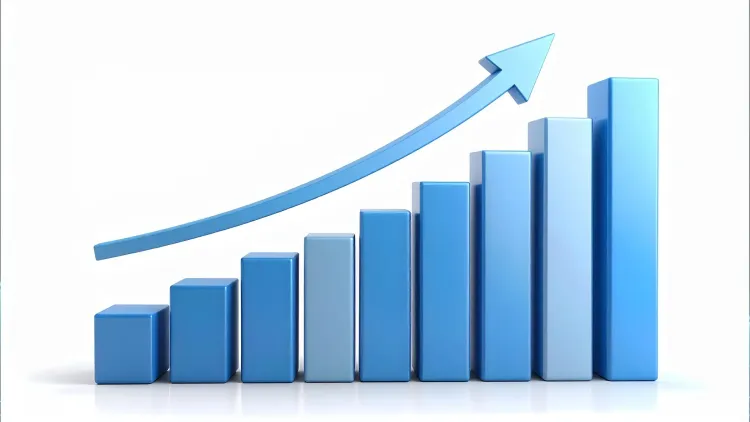Are Corporate Investments Reaching Rs 28.50 Lakh Crore in FY25?

Synopsis
Key Takeaways
- Corporate investments reached Rs 28.50 lakh crore in FY25.
- Core infrastructure sectors are driving this growth.
- 56% of fixed assets are concentrated in five key industries.
- Positive consumer demand is anticipated in FY26.
- Government spending is crucial for capacity building.
New Delhi, May 22 (NationPress) Corporate investments have seen a significant rise in the fiscal year 2024-25, driven primarily by the core infrastructure sectors, as highlighted in a report from the economic research department of the Bank of Baroda.
The report, which analyzes data from 1,393 companies across 122 industries, reveals that gross fixed assets, including ongoing capital projects, surged by 7.6 percent to reach Rs 28.50 lakh crore in FY25, compared to Rs 26.49 lakh crore in FY24.
Refineries led the way, representing 31 percent of fixed assets, followed by telecom services at 8.6 percent, iron and steel products at 5.9 percent, cement at 5.4 percent, and power at 4.8 percent.
These five sectors alone made up 56 percent of total fixed assets, showcasing the fundamental role of core infrastructure industries in capital formation.
According to the report, “Most of the leading sectors that drive investment in the country are within infrastructure and have demonstrated substantial growth rates.”
The following five industries by fixed asset share—public sector banks, private sector banks, chemicals, industrial gases, and non-ferrous metals—accounted for an additional 14.5 percent.
Passenger cars, FMCG, pharmaceuticals, IT software, and sponge iron collectively constituted another 10.4 percent of fixed assets.
These industries accounted for nearly 81 percent of corporate fixed assets in FY25, underscoring their vital role in propelling capital expenditure.
The report anticipates a positive outlook for consumer-oriented industries in the upcoming year (FY26), as consumption is expected to rebound. Although demand in several sectors has fluctuated, especially in urban areas, government initiatives and decreasing inflation are anticipated to foster recovery.
Sectors like cement, passenger vehicles, banking, pharmaceuticals, steel, sponge iron, and refineries have outperformed the average growth in fixed assets, according to the findings.
“In the case of cement and steel, the connection lies with government capital expenditure, resulting in new capabilities to meet growing demand. For refineries, this investment is aimed at expansion. On the consumer front, developments in drugs and pharmaceuticals reflect new capacities to satisfy both domestic and export requirements,” the report elaborated.









